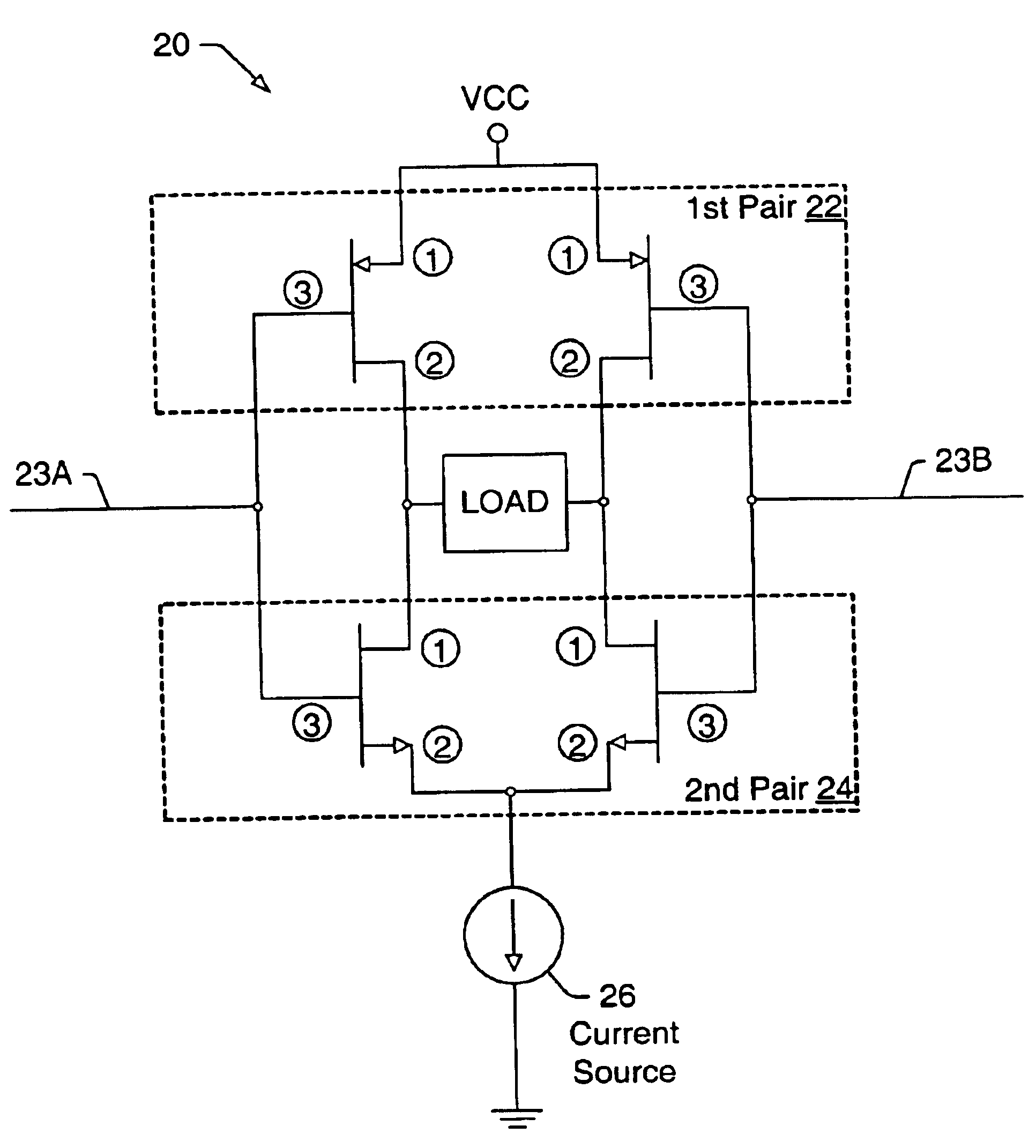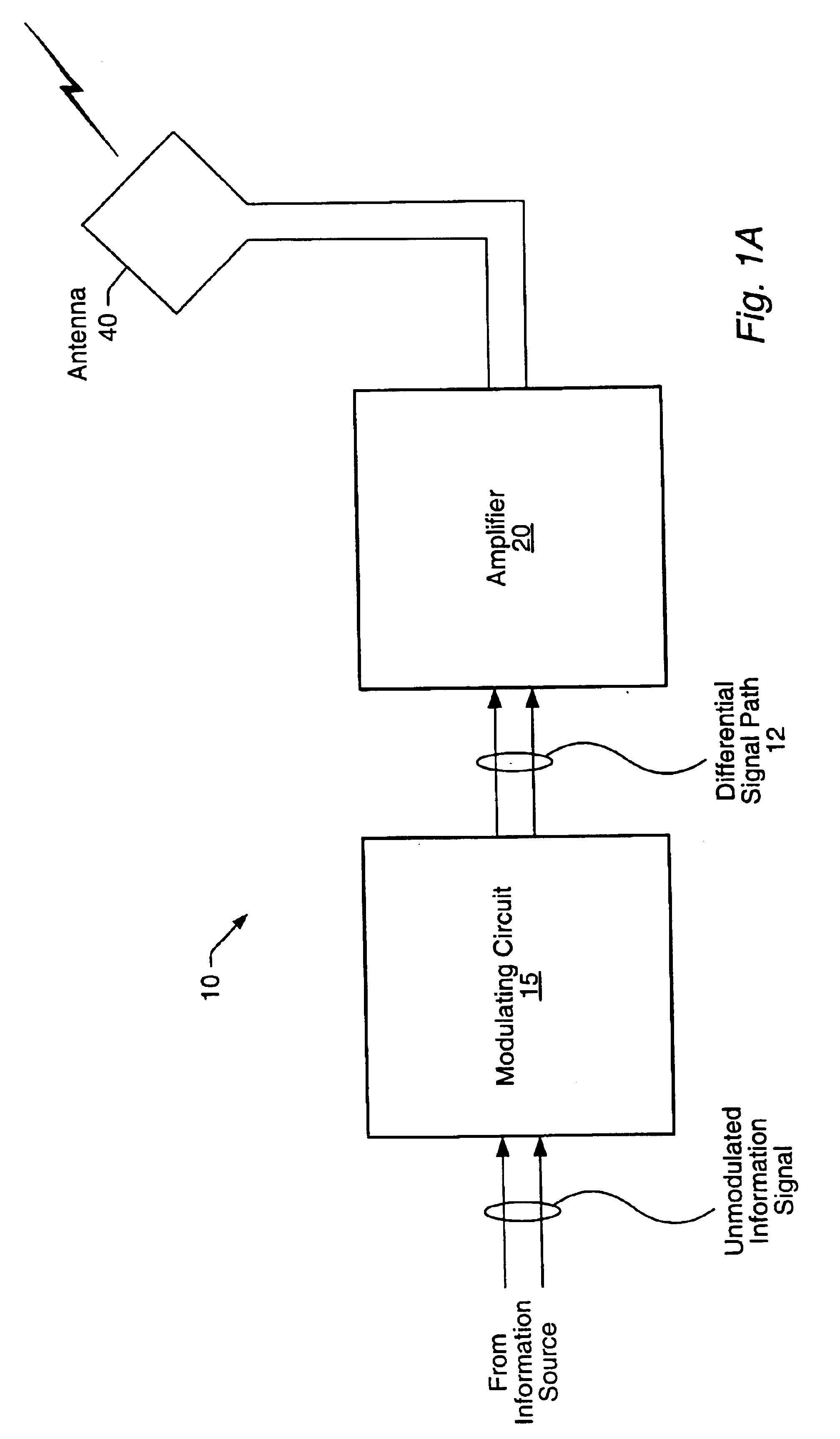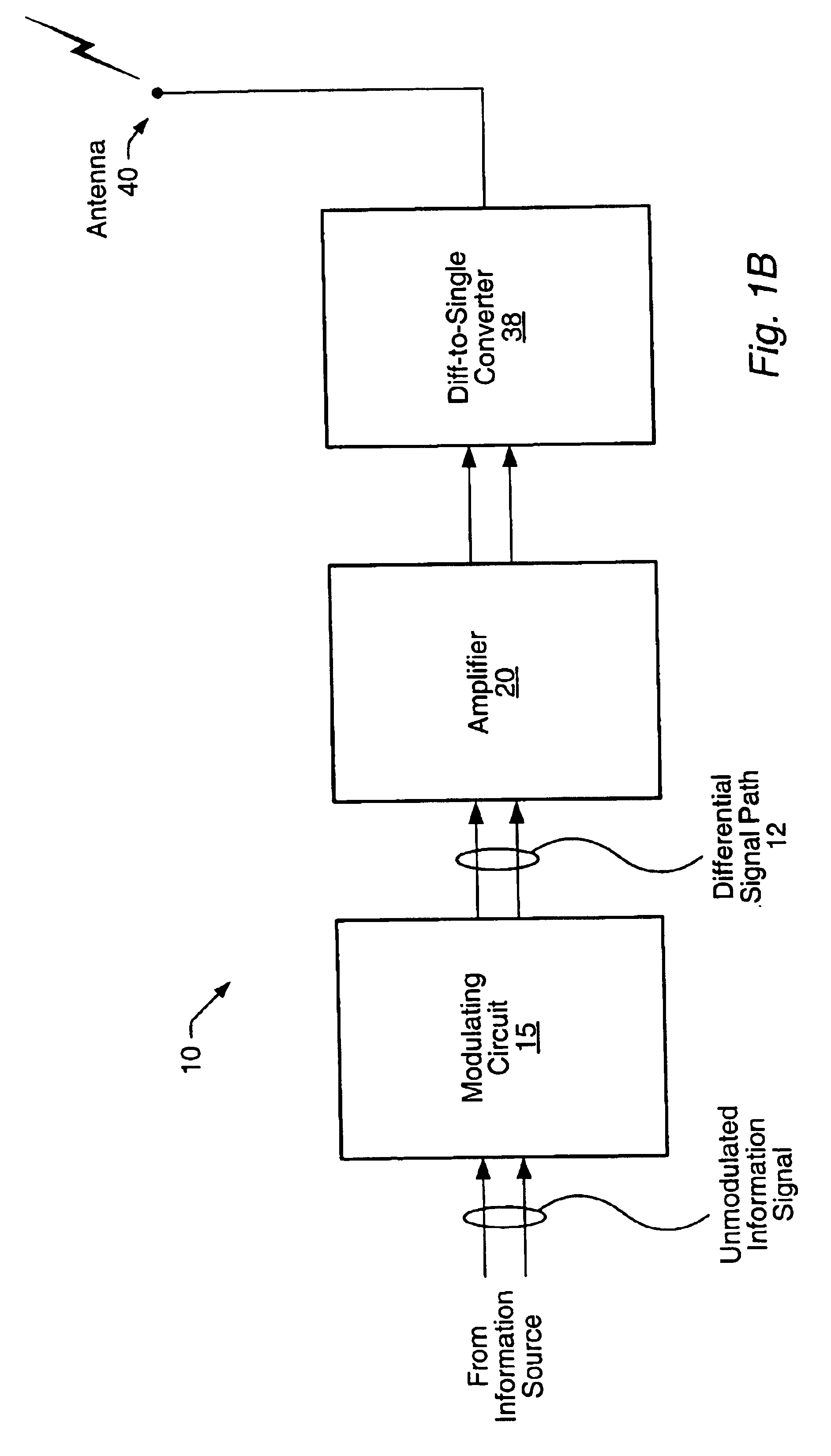Current controlled bridge amplifier
a bridge amplifier and current control technology, applied in the field of electrical circuits, can solve the problems of adversely affecting the high power consumption, and inconvenient operation of the amplifier, and achieve the effect of substantially constant current draw of the amplifier
- Summary
- Abstract
- Description
- Claims
- Application Information
AI Technical Summary
Benefits of technology
Problems solved by technology
Method used
Image
Examples
Embodiment Construction
[0016]Turning now to FIG. 1A, a block diagram of one embodiment of a wireless transmission device is shown. Wireless transmission device 10 includes a modulating circuit 15, which is coupled to amplifier 20. It is noted that wireless transmission device 10 may have other components than those explicitly shown here. Amplifier 20 is coupled to antenna 40, which is a loop-type antenna in this particular embodiment. Wireless transmission device 10 may be virtually any type of wireless device configured to transmit signals over the airwaves. For example, wireless transmission device may be a wireless keyboard, a wireless mouse, or a wireless / cordless telephone.
[0017]Modulating circuit 15 may be coupled to receive a differential input signal from an information source. The received information signal may be mixed with a signal at a carrier frequency for transmission from wireless transmission device 10. One of several commonly known modulation techniques may be performed by modulating cir...
PUM
 Login to View More
Login to View More Abstract
Description
Claims
Application Information
 Login to View More
Login to View More - R&D
- Intellectual Property
- Life Sciences
- Materials
- Tech Scout
- Unparalleled Data Quality
- Higher Quality Content
- 60% Fewer Hallucinations
Browse by: Latest US Patents, China's latest patents, Technical Efficacy Thesaurus, Application Domain, Technology Topic, Popular Technical Reports.
© 2025 PatSnap. All rights reserved.Legal|Privacy policy|Modern Slavery Act Transparency Statement|Sitemap|About US| Contact US: help@patsnap.com



